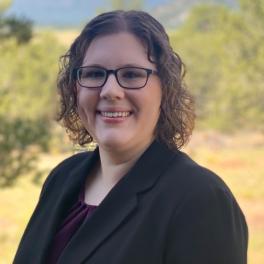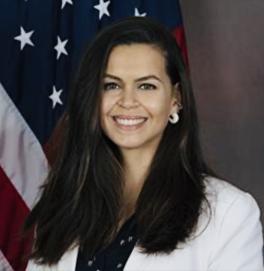Graduate alumni are using their skills in many lines of work. Career allies can support graduate students as they discern what career path is right for them. “Flight Paths” is series of alumni profiles — produced by the Global Arts and Humanities Imagined Futures: Graduate Professional Development Initiative— that highlights the key roles mentors play in equipping graduate students to imagine and prepare for a diverse array of meaningful careers. Each story describes a mentorship strategy that alumni found pivotal to their career success.
Prototyping: Practice Makes Possible
Alumni featured in this series often emphasize the importance of gaining exposure to and experience within diverse career opportunities. This practice, known as "prototyping," allows students to explore potential career paths and develop essential skills. Even if the student is trying a work experience outside their graduate program, the faculty mentor plays a crucial role by saying “yes”—encouraging students to explore and helping them build professional networks and connections.

Elizabeth Kirkendoll (Musicology PhD ‘18) notes the significance of prototyping career options by taking on short-term roles to develop new skills. “When I took a nonprofit job, I knew it wasn’t a long-term job. But I knew I needed those skills, and I needed someone to take a chance on me so then I could get another job later on.” Prototyping offers a low-risk way for students to test career paths, develop competencies, and refine their goals. Whether this is through internship opportunities, roles in student organizations, or by volunteering, seeking out opportunities to learn new skills and try new careers is invaluable and an important way to begin building one’s network. As a student, she volunteered in the Office of Student Affairs to test whether she liked this kind of work, and to develop a group of recommenders who could help her get the next job.
Kirkendoll currently works as the Assistant Director for the Academic Resource Center at Texas Christian University. Initially committed to a tenure-track career, she eventually realized her aspirations had shifted. Kirkendoll highlights mentorship and networking as essential to career development, not just for securing jobs but for gaining professional clarity. She emphasizes that networking should be a reciprocal process—mentees should offer value to their mentors rather than solely seeking advice. Through her network, she found professionals willing to introduce her to new opportunities or prototyping experiences, illustrating how relationships often lead to career breakthroughs.
Working the Network

Clara Fachini Zanirato’s (Spanish and Portuguese PhD ’20) story demonstrates how networking can be leveraged to make bold career transitions. Currently working as a CCB Operations Records Management Senior Associate at JP Morgan Chase, Fachini Zanirato is a specialist in records management and data risk analytics. She credits her graduate experience with providing opportunities to organize events, collaborate on research, and attend conferences—experiences that honed her professional skills. Her advisors were instrumental in helping create these types of opportunities and encouraging her to seek out new paths.
While Fachini Zanirato initially pursued a professorship, her network helped her discover alternative career paths. "Most people go from university to university until they land a tenure-track job. I didn't feel like doing that," she shares. "Because of networking efforts, I had people outside academia who helped open doors, including at Chase." Before pursuing her PhD, she had worked in the nonacademic field for a few years, essentially having the chance to prototype different career options. She notes that traditional PhD students typically go from degree to degree and don’t end up with job market experience outside of academia that can make it difficult to navigate that transition. Her professional connections not only broadened her job prospects but also provided critical mentorship and insight into the corporate world. She highlights the importance of developing relationships beyond academia, attending professional events, and proactively seeking out conversations with individuals in different industries. Ultimately, her willingness to leverage her transferable skills and engage with diverse professional networks positioned her for success in a field she had not initially considered.
The Takeaway
Prototyping—through internships, short-term roles, or volunteer opportunities—offers students a safe environment to test out career paths and acquire new skills. Effective prototyping relies on strong networking, as connections often provide the entry points into these roles. Students can hold time for internships and experiential learning by registering for course credit for these experiences (e.g. ARTSSCI 6191, BA 2601, FAES 2351, or ENR 1500). Some colleges’ career offices offer funding for students who take low-paid or unpaid internships, such as the Arts and Sciences Career Accelerator Fund. The Colleges of Dentistry and Law offer “externships” to provide training in a specialized area while the Colleges of Business, Nursing, and Public Health provide job shadowing experiences through their career services.
Faculty and programs can assist students by actively fostering networking opportunities and create structured spaces for career exploration. Some graduate programs are supporting students by integrating skill development with real-world applications—such as projects that serve constituents outside the university. Encouraging students to build connections beyond academia, communicate across different professional contexts, and take advantage of resources like Ohio State’s internship courses or funding support can bridge the gap between academic training and diverse career pathways.
